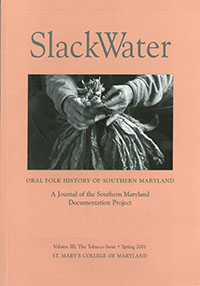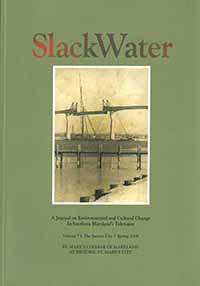Was It Worth It?
There, on the left wall of his office, hangs a frame—of mind, of place and time. There he is, on a newspaper yellow with age and rich with history, young and sure of it all, maintaining a low profile but supportive of a new bridge across the lower Patuxent River and of a new, reliable, and affordable form of energy to supply the ever expanding counties of Southern Maryland.
There he stood, on May 6, 1966, along with fellow Maryland politicians. I cannot help but wonder: was he deliberating how the presence of a new bridge and a nuclear power plant in Southern Maryland would be received by members of the local community whose livelihoods had relied on the land and waterways for centuries? Or were his thoughts more focused on economic development in general? After all, in 1966, the prospects of a bridge and a nuclear power plant were just two of many ideas on the table for bringing Southern Maryland into the modern world.
In 1975, Unit One of the Calvert Cliffs Nuclear Power Plant commenced commercial operation; 2700 megawatts of electricity were produced in Southern Maryland and transmitted by wire to power Baltimore. In 1977, Unit Two brought another 2700 megawatts to the grid, and reinforced Calvert County’s dependency on Baltimore Gas and Electric for tax revenues previously undreamed of in this historically poor county.
In 1978, the Governor Thomas Johnson Bridge opened to traffic, connecting Calvert and St. Mary’s counties over the Patuxent River. There was no turning back. Traveling the bridge became instinctive, almost muscle memory; the turn of the steering wheel, the turn of the head, and the turn of the times for Southern Marylanders crossing the bridge for home.
In 2008, J. Frank Raley sits behind his desk, 82 years young, telling me how well Europe and Asia have accepted nuclear energy, and how the construction of a third reactor in Calvert County is now necessary.
“Was it worth it?” the August 18, 1966 edition of The Enterprise had presciently asked of J. Frank Raley. Today we can ask the same question. Was it worth it to construct a 140-foot-high bridge as an escape route in case the plant ever melted down? Would we really hear the sirens blaring for a hundred-mile radius in time if there was a crisis at the plant? Would we even make it to the bridge?
If you have ever driven over the Governor Thomas Johnson Bridge on a warm and cloudy summer day, or a crisp, star-filled winter night with the windows rolled down, you have not only experienced the artificial link between Calvert County and St. Mary’s County; you have likely been mesmerized by the juncture of the Patuxent River and the Chesapeake Bay that fills your windshield. At the peak of this bridge, the oxygen seems to linger in your lungs a bit longer, and induce a hypnotic nostalgia, not only for what the waterscape stretching below you once was, but more importantly, for what it is becoming.
Do I, Henry Arango, think it was all worth it? Yes, it was, absolutely, is what I would have said, standing in Raley’s shoes.
-Special thanks to J. Frank Raley








